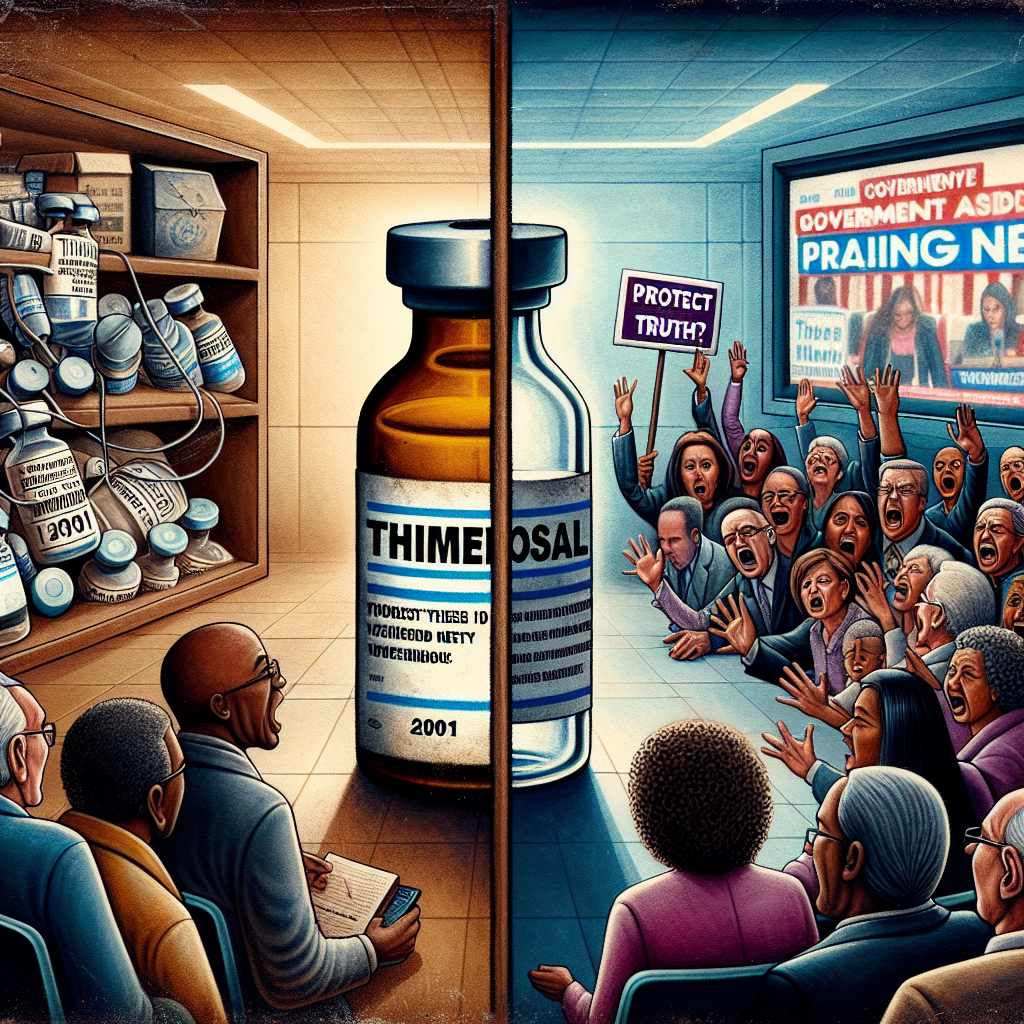**Thimerosal: The Mercury Molehill That Became a Political Mountain**
Listen up, folks — the truth’s about to drop harder than approval ratings before midterms. This week, we’re digging deep into a ghost from the pharmaceutical past that’s been exhumed faster than a politician’s college tweets: Thimerosal. Yeah, that’s right. The mercury-based vaccine preservative that got booted from most shots over two decades ago is suddenly back in political headlines — not because of science, but because of strategy.
Here’s the recap: U.S. Health and Human Services Secretary Xavier Becerra had a Howard Beale moment, calling Thimerosal “toxic.” The crowd gasped, the fact-checkers scrambled, and the anti-vax corner of the internet creamed its cargo pants in excitement. But before we let panic go viral again, let me do what no bureaucrat will dare do on the record — slap this narrative and remind everyone what game’s really being played.
Spoiler alert: Thimerosal is not in your kid’s vaccines anymore. It was taken out of nearly all childhood vaccinations in 2001, back when Nokia phones ruled the earth and streaming meant a slow leak in your basement. Since then? Not a whisper from the CDC, no rising tide of autism, no Illuminati inserting mind-control chips through syringes. But now, somehow, it’s back in our headlines.
Why, you ask?
Because the election countdown has begun, and nothing gets the base frothing like health hysteria. You’ve got your pandemic deniers, your Big Pharma bashers, and your “I do my own research” warriors all desperate for a new banner to wave. Enter Thimerosal — not because it’s *currently* a problem, but because it *was once* a headline. And let me tell you something about politicians: they love to recycle controversy more than a California vineyard loves drought.
Oh, and did I mention strategic misdirection? While we’re arguing about a mercury compound last seen in children’s flu shots around the same time Britney Spears was topping the charts, there’s a real health crisis playing peekaboo with your premiums. Insulin prices? Sky high. Maternal mortality? Still a nightmare. But sure — let’s talk about antique preservatives while Rome smolders and the FDA pats itself on the back for approving Ozempic ads with more disclaimers than a Vegas prenup.
And don’t get me wrong, the concern over toxic substances is real — if it’s 1998. But dragging Thimerosal out of retirement now is like blaming disco for the housing crisis. The science is settled, but the politics? Oh baby, we’re cooking with gas.
If you think Becerra’s comments were just off-the-cuff, I’ve got beachfront property in Detroit to sell you. This was a calculated nod — not to science, but to sentiment. It’s the health equivalent of yelling “open borders!” in a border town diner: guaranteed applause from one side, angry rebuttals from the other, and boom — you’re trending.
The game’s on, and folks, I play to win.
So here’s the play: you’ll see this weaponized on campaign trails like a rusty knife — not sharp enough to kill the science, but pointy enough to stir the pot. Anti-vaxx talking heads will use it to shout “See? The government admits it’s poison!” while actual scientists do slow-motion facepalms in their labs. Meanwhile, the rest of us? We’re caught in the crossfire, again.
Bottom line: Thimerosal is no longer in your routine vaccines, and wasn’t the problem some conspiracists wanted it to be. But it *is* a problem now — not in laboratories, but in the halls of power, where every molecule of fear can be distilled into a fundraising email.
So buckle up, because as we barrel toward 2024, we’re going to see more of these revived boogeymen. Thimerosal, fluoride, windmills — you name it. If it can scare a voter or start a fight on Facebook, it’s fair game.
And to every opportunistic politician digging through public health’s junk drawer looking for the next viral hit? I see you. And you better believe, I’ll be watching when your talking points become torch fuel.
No fluff. No spin. Just facts with fire.
— Mr. 47










